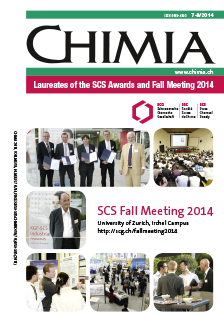Taming Hypervalent Bonds and Strained Rings for Catalysis and Synthesis
DOI:
https://doi.org/10.2533/chimia.2014.516Keywords:
Acetylenes, Activated cyclopropanes, Catalysis, Hypervalent iodine, SynthesisAbstract
Improving the synthesis of complex organic molecules is essential for progress in many fields such as medicine, agrochemicals or materials. Since 2007, our laboratory has been focusing on the development of non-classical bond disconnections based on the use of small, energy-loaded organic molecules: hypervalent iodine reagents and strained rings. In this overview article, we report our progress since 2011 in these areas. The use of cyclic hypervalent iodine reagents has been extended to the C2-selective alkynylation of indoles, the domino cyclization alkynylation of allenes, the alkynylation of thiols and the azidation of carbonyl compounds. Amino-substituted aminocyclopropanes and aminocyclobutanes were used in [3+2] and [4+2] annulations to access nitrogen-rich building blocks, including nucleoside analogues. The first example of dynamic kinetic [3+2] annulation of aminocyclopropanes with both enol ethers and aldehydes was also reported.Downloads
Published
2014-08-27
Issue
Section
Scientific Articles
License
Copyright (c) 2014 Swiss Chemical Society

This work is licensed under a Creative Commons Attribution-NonCommercial 4.0 International License.
How to Cite
[1]
Chimia 2014, 68, 516, DOI: 10.2533/chimia.2014.516.







